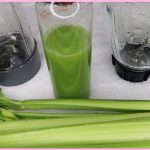A juicer is an essential kitchen appliance designed to extract juice from fruits, vegetables, and even herbs. It works by separating the liquid part of the ingredients from their solids, leaving you with a pure and refreshing drink. But a juicer does more than just convert whole produce into juice; it also preserves the essential nutrients and enzymes that can be lost through cooking or processing. This makes it easier for your body to absorb the nutrients and enjoy their health benefits.
One key purpose of using a juicer is to easily increase your daily intake of fruits and vegetables. We all know how important it is to eat our greens, but sometimes it can be challenging to consume enough each day. With a juicer, however, you can pack several servings of produce into one delicious glass of juice. By doing so, you provide your body with an abundance of vitamins, minerals, antioxidants, and fiber that are necessary for maintaining good health.
Moreover, another purpose of using a juicer is to create unique flavor combinations that are not usually found in store-bought juices. You have full control over what goes into your homemade juice blends – whether you prefer something sweet or tangy or want to experiment with exotic flavors. The possibilities are endless! A juicer allows you to fully customize your drinks according to your taste preferences while still enjoying all the nutritional benefits fresh produce has to offer.
Types of Juicers: Centrifugal, Masticating, Citrus
When it comes to juicing, there are a few different types of juicers on the market that can produce delicious and nutritious juice. One popular type is the centrifugal juicer. These machines use high-speed spinning blades to extract juice from fruits and vegetables. While they are generally more affordable and faster at extracting juice than other types of juicers, they do tend to create more foam and may not be as efficient in extracting all the nutrients from your produce.
Another option is a masticating juicer, also known as a slow or cold-press juicer. These machines operate at a slower speed, gently crushing and squeezing the juice out of your fruits and vegetables. This method helps preserve more nutrients due to its low heat production during extraction. Masticating juicers are also capable of handling leafy greens and wheatgrass better than centrifugal models.
For those who enjoy citrus juices, a citrus juicer is the way to go. Specifically designed for squeezing oranges, lemons, limes, or grapefruits, these compact appliances effectively extract every drop of juice from citrus fruits with minimal effort on your part.
Ultimately, choosing the right type of juicer depends on your preferences for convenience, budget constraints, nutritional needs, and personal taste preferences. Regardless of which type you choose – centrifugal for speed and affordability or masticating/citrus for nutrient retention – incorporating fresh juices into your daily routine can provide numerous health benefits while adding variety to your diet.
How Does a Centrifugal Juicer Work?
A centrifugal juicer is a popular choice for many juice enthusiasts due to its efficient and fast extraction process. This type of juicer operates by using a rapidly spinning blade to grind up fruits and vegetables, while the centrifugal force generated separates the pulp from the juice. As the food is fed into the juicer through a chute, it comes into contact with a series of sharp teeth that quickly shred it into small pieces. The high-speed spinning action of the blade then propels these pieces against a mesh screen, which acts as a filter. The juice passes through the tiny holes in the screen, while larger particles such as pulp are left behind.
One key advantage of centrifugal juicers is their ability to handle large quantities of produce without requiring much prep work. Most models come with wide feed chutes that can accommodate whole fruits or vegetables, reducing the need for chopping or peeling. However, this convenience comes at a price – literally! Due to their high-speed operation and metal blades, centrifugal juicers tend to generate more heat during the extraction process compared to other types of juicers like masticating or cold press ones. Excessive heat can potentially degrade some nutrients in freshly squeezed juices and shorten their shelf life.
Despite this drawback, there are ways to optimize your experience with a centrifugal juicer. It’s always recommended to drink your juice immediately after using this type of machine since it tends to oxidize faster than juices made with slower methods.
How Does a Masticating Juicer Work?
A masticating juicer, also known as a cold press juicer or slow juicer, is an ingenious piece of kitchen equipment that utilizes the slow and methodic process of mastication to extract juice from fruits and vegetables. Unlike its centrifugal counterpart, which uses high speed and sharp blades to separate the juice from the pulp, a masticating juicer operates at a much slower speed to produce higher nutritional value in the resulting juice.
The mechanism behind a masticating juicer involves crushing and squeezing the ingredients rather than chopping them into tiny pieces. A single auger with fine teeth takes on the role of slowly rotating inside a chamber where fresh produce is fed through a chute. As this auger moves along, it kneads and grinds everything within its reach until there is nothing left but pure juice dripping into one container while pulp comes out through another side.
This slower method of extraction ensures less oxidation occurs during the juicing process compared to centrifugal juicers. This lack of oxidation translates to more nutrients being preserved in the juice since minimal heat is generated as well. Additionally, it allows for better extraction of juice from leafy greens like kale or spinach, which can be notoriously stubborn when using other types of juicers. Overall, a masticating juicer offers not only higher yield but also healthier and more vibrant juices filled with essential vitamins and minerals.
How Does a Citrus Juicer Work?
When it comes to juicing citrus fruits like oranges, lemons, and grapefruits, a citrus juicer is the ultimate kitchen tool. But have you ever wondered how this magical contraption works its wonders? Let’s delve into the inner workings of a citrus juicer.
At its core, a citrus juicer operates on a remarkably simple principle. The fruit is cut in half and pressed down onto a reamer or cone-shaped surface that rotates at high speeds. As you apply pressure, the reamer extracts the juice by piercing through the pulp and separating it from the peel. Gravity then takes over as the juice flows down through small holes or channels and collects in a container below.
One interesting feature of some citrus juicers is their ability to control the pulp level in your juice. By adjusting a pulp control dial or switch, you can decide whether you prefer no pulp, some pulp, or maximum pulp in your freshly squeezed orange juice – catering to all taste preferences! With these insights into how this fascinating appliance works its magic on your favorite citrussy drinks, every sip feels even more satisfying!
Pros and Cons of Different Juicers
When it comes to choosing a juicer, there is no one-size-fits-all solution. Different juicers have their own unique pros and cons that can greatly impact your juicing experience.
One of the most popular types of juicers is the centrifugal juicer. These machines work by using a fast-spinning blade to extract juice from fruits and vegetables. One major advantage of centrifugal juicers is their speed – they are incredibly efficient and can quickly produce large quantities of juice. However, the high-speed spinning action can create heat, which may reduce the nutritional value of the juice. Additionally, these juicers are not as effective at extracting juice from leafy greens like kale or spinach.
On the other hand, masticating juicers operate at a slower speed and use an auger to crush fruits and vegetables against a screen to extract juice. This method helps preserve more nutrients in the juice as it generates less heat during the process. Masticating juicers also excel at extracting juice from leafy greens and wheatgrass, making them ideal for those looking for nutrient-rich green juices. However, these slow-juicing machines may require more preparation time due to their narrower chute size and slower extraction process.
Finally, there are also citrus juicers designed specifically for squeezing citrus fruits like oranges, lemons, or grapefruits. Citrus squeezers are efficient in extracting maximum juice with minimal effort while avoiding bitter flavors that arise when you accidentally squeeze out some peel oil.
FAQs
Q. What exactly does a juicer do?
A juicer is a kitchen appliance that extracts juice from fruits and vegetables, separating the liquid from the pulp.
Q. How does a juicer extract juice from fruits and vegetables?
Most juicers use blades or gears to chop or grind the produce into smaller pieces. Then, they apply pressure to squeeze out the juice while separating it from the pulp.
Q. Can I use any type of fruit or vegetable in a juicer?
Yes! Juicers are designed to handle a wide variety of fruits and vegetables. You can experiment with combinations to create unique flavors.
Q. Do I need to peel my fruits and vegetables before using a juicer?
It depends on your preference and the type of produce you’re using. While some peels are safe to consume, others may have a bitter taste or contain pesticides. It’s generally recommended to wash your produce thoroughly beforehand.
Q. Will using a juicer remove all the nutrients from fruits and vegetables?
No, juicers don’t remove all the nutrients. However, they do separate some fiber from the juice, so you may lose some dietary fiber content compared to eating whole fruits or vegetables.
Q. Can I make other things besides juice with a juicer?
Absolutely! Many juicers come with additional attachments that allow you to make nut milks, sorbets, baby food, and even pasta dough.
Q. Is cleaning a juicer difficult?
Cleaning procedures vary depending on the model, but most modern juicers have removable parts that are dishwasher safe or easy to clean by hand.
Q. Are there different types of juicers available in the market?
Yes, there are several types of juicers such as centrifugal juicers, masticating (or slow) juicers, twin gear (or triturating) juicers, and citrus pressers – each with its own strengths and features catering to different needs and preferences.
Conclusion
Choosing the right juicer for your needs ultimately comes down to personal preference and what you value most in a juicing experience. Whether you prioritize convenience, maximum nutrients, or budget-friendly options, there is a juicer out there that will suit your specific requirements.
When considering what type of juicer to invest in, think about how often you will be using it and the amount of time you are willing to dedicate to preparation and cleanup. Centrifugal juicers are great for those who want quick and easy juice extraction with minimal effort, while masticating juicers are ideal for those who want nutrient-rich juices and don’t mind spending a little extra time on the process.

Freda is a passionate foodie and kitchen gadget enthusiast. With over 10 years of experience in the culinary industry, Freda brings her expertise in testing and reviewing kitchen gadgets.



